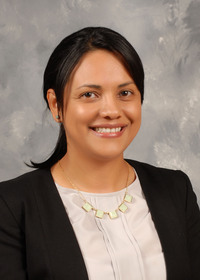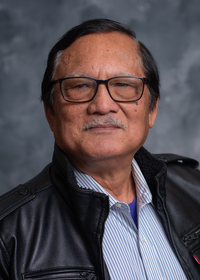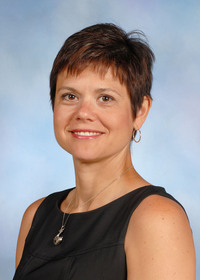The Economic Value of Social Media Advertising on Mississippi Agribusiness: The Case of MG Farms Inc.
This report documents the economic value of social media advertising on an agribusiness firm operating in Woodville, Mississippi. MG Farms Inc. is a family-owned livestock operation that produces and sells high-valued breeding stock. MG owners requested assistance from the Mississippi Bricks to Clicks (B2C) entrepreneurship program with regard to using Facebook to advertise a livestock sale on February 21, 2015.
According to MG owners, the only significant difference between its 2014 and 2015 livestock sale was the adoption and implementation of the Facebook advertisement campaign and other strategies learned in the B2C program (Barnes, 2013; Barnes and Coatney, 2015). Results indicated that adoption of these campaigns and strategies resulted in a significantly positive impact on attendance and livestock sales. Compared to 2014, attendance and livestock sales increased 20 and 33 percent, respectively. In addition, MG’s Facebook page itself appreciated in economic value (as an intangible asset) due to being connected to an additional 1,120 fans, or potential buyers. As a result, MG’s Facebook page value increased by $122,080.
Mississippi Bricks to Clicks
B2C is a Mississippi State University Extension Service entrepreneurship program. The program teaches businesses how to simply and effectively use social media in business practice. The B2C program trains entrepreneurs to understand and implement best management practices when using social media in business and how using social media can translate into economic value. Using a research-based curriculum, entrepreneurs in this training program learn how to use optimal organic postings (posts made by business owners onto their Facebook pages) and paid advertisement strategies to maximize the return on investment (ROI) from using Facebook, Twitter, or Instagram (Barnes, 2013; Barnes and Coatney, 2014).
Typically, ROI can be simply defined as: ROI = ((Gains – Costs) / Costs) x 100. For example, if an investment provides gains of $250 and it cost $200 then the ROI would be 25 percent (($250 - $200) / 200) x 100. Due to confidentiality concerns, actual sales dollars cannot be disclosed in this report when evaluating sources of economic value. However, anecdotal comparisons can be made through conducting interviews with business clients where they report a percentage change in a sales estimate against the cost of a Facebook advertisement campaign. This could serve as one measure of an adjusted ROI when evaluating participation in the B2C program. The second measure could be to compare actual sales in the current year compared to the previous year when the only significant difference is the adoption of the Facebook advertisement campaign and other strategies learned in the B2C program (Barnes, 2013; Barnes and Coatney, 2015). The third measure that could be used is related to the appreciation of an agribusiness firm’s intangible asset as a result of participation in the B2C program. Simply put, a Facebook business page can be considered an intangible asset (Barnes and Coatney, 2014), and its economic value can increase as a result of participating in the B2C program, other things equal. All three measures were considered in this report when measuring MG’s economic value.
Facebook Business Pages as Intangible Assets
Agribusiness firms can own intangible assets or such nonphysical assets as franchises, trademarks, patents, or copyrights (Olson et al. 2007). Furthermore, intangible assets can fall into one of five categories: marketing-related, customer-related, artistic-related, contract-related, and technology-related. Olson et al. (2007) identified that intangible assets have the following characteristics: legal existence and protection, private ownership, transferability, and evidence of its existence (e.g., contract, license, registration, listing, or other documentation). Finally, intangible assets either appreciate or depreciate over time and can be related to an agribusiness firm’s online brand (Syncapse, 2010).
In this report, MG’s Facebook page value was measured by applying a dollar value per Facebook page “like” before and after MG entered the B2C program. This is consistent with industry research to date on valuating Facebook likes on pages as a source of economic value (Edwards, 2013; Syncapse, 2010). As a result, the difference in intangible asset value before and after participation in the B2C program was used as one source of economic value as MG’s Facebook page (its intangible asset) appreciated in economic value.
Economic Value
One of the most difficult aspects of Facebook advertising is determining economic impact. MG’s economic value was determined by two factors. The first was the change in its Facebook page value. The second was the change in livestock sales from 2014 to 2015. While we estimated the change in MG’s Facebook page value based on Edwards (2013) and Syncapse (2010), anecdotal evidence and interviews with MG determined its change in livestock sales.
MG’s Facebook page increased in fan size and, therefore, connections with potential customers. MG’s Facebook data from its page and performance metrics from January 5 to March 5, 2015 (the time frame MG owners were trained and paid advertisements were implemented for the sale on February 21, 2015) were analyzed. Facebook page metrics that affect MG’s intangible asset value included:
- The number of Facebook page likes increased by 1,120. This includes those from paid campaigns as well as organic. Organic fans are those who became fans of the page through the sharing of content among users. In the current case, MG added 1,120 potential customers above their regular fan base, some of whom may have attended the 2015 sale (Figure 1).
- The number of engaged users increased during this period by 4,415. Engaged users are those fans who have liked the page and interacted with its content. Total page engagements were measured by likes, shares, comments, and clicks on any post on the page (Figure 2).
- The total number of people reached during the paid and organic advertisements equaled 67,017 (Figure 3). Paid reach is the total number of unique people who were shown a post as a result of a paid advertisement. Organic reach is the total number of unique people who were shown a post through Facebook’s newsfeed distribution.



The growth in page likes, engaged users, and total number of people reached can translate into increased economic value for MG. Olson et al. (2007) noted that intangible assets have value. A Facebook page that connects to more customers can be an example of an intangible asset that has customer-related economic value. The key would then be to connect the customer-related intangible asset value to something that has tangible economic value, such as sales. A simple form of measurement can be that each Facebook fan has an economic value in terms of potential sales. Being connected to more potential customers would then be seen as a valuable economic intangible asset as firms can advertise products and services to fans on Facebook pages. As a result, more fans (a potential loyal customer base) can result in more verifiable customers, other things equal.
A study by Syncapse (2010) indicated that Facebook fans reported spending $71.84 more per year than nonfans. Furthermore, these same fans were 41 percent more likely to recommend a liked product to their friends compared to nonfans. In this same study, the average value of a fan was estimated to be $136.38, but the highest value was $270.77. However, fan value depends on the brand, the firm’s connection with fans, and the engagement on a liked product’s page. The value of a fan or like varies by industry, as well. Edwards (2013) provided a summary across multiple studies and industries and found the average value of a fan was approximately $107.41.
MG’s Economic Value
From a review of Syncapse (2010) and Edwards (2013), a midpoint estimate of $109 per fan or page like was used in this report. Given that MG gained an additional 1,120 fans, the economic value of this fan base acquisition equaled $122,080 ($109 x 1,120). More to the point, the overall value of being connected to more potential customers has a positive effect on MG’s Facebook page intangible value equal to $122,080.
Second, post-sale interviews were conducted with MG owners to understand more about the livestock sale event held on February 21, 2015. From MG’s anecdotal evidence, results revealed that event attendance increased by 20 percent and actual livestock sales increased 33 percent as compared to the same sale event in 2014. According to MG owners, the only significant difference between 2014 and 2015 was the adoption of the Facebook advertising campaigns and other strategies learned in the B2C program. A budget of only $735 was used for all paid Facebook advertisements. Based on discussions with MG owners, the benefits of Facebook advertising (increased sales of high-end breeding stock) far exceeded the cost of the advertising budget of $735, suggesting a strong ROI from Facebook advertising and participation in the B2C program.
Lessons Learned
This report provided a case study method of evaluating the sources of economic value that social advertising had on an agribusiness firm in Mississippi. Through MSU Extension’s Mississippi Bricks to Clicks entrepreneurship program, MG owners implemented best practices in organic postings to Facebook (Barnes, 2013) and paid advertisement (Barnes and Coatney, 2015). These best practices were adopted and implemented to market a livestock sale for MG on February 21, 2015. Results indicated that attendance increased by 20 percent, livestock event sales increased by 33 percent, and MG’s estimated increased value for its Facebook page equaled $122,080.
While social media can be a useful marketing tool, agribusiness owners need research-based training to understand the economics and management of social media in business. The Mississippi Bricks to Clicks entrepreneurship program provides such training, and when the program’s Facebook best practices were adopted, the results were significantly beneficial to MG Farms Inc.
References
Barnes, J. and K. Coatney. 2015. Facebook ‘Farming’ for Rural Organizations, The Daily Yonder: Keep It Rural.
Barnes, J. and K. Coatney. 2014. Regional Economic Development and Marketing Rural Tourism Events Using Facebook: The Woodville Deer and Wildlife Case, Mississippi State University Extension, Publication 2855.
Barnes, J. 2013. Social Media Marketing: Facebook, National eCommerce Extension Initiative, eBiz: Tips for Marketing Your Business, Southern Rural Development Center.
Edwards, J. What Is a Facebook ‘Like’ Actually Worth in Dollars?, Business Insider, March 27, 2013.
Olsen, G., M. Halliwell and R.P. Gray. 2007. Intangible Value: Delineating Between Shades of Gray, Journal of Accountancy, (May): 66-68, 70, 72.
Syncapse. The Value of a Facebook Fan: An Empirical Review, June 2010.
Publication 2912 (POD-06-23)
By James Barnes, PhD, Associate Professor and Extension Economist, and Kalyn Coatney, PhD, Professor, Agricultural Economics.
The Mississippi State University Extension Service is working to ensure all web content is accessible to all users. If you need assistance accessing any of our content, please email the webteam or call 662-325-2262.







